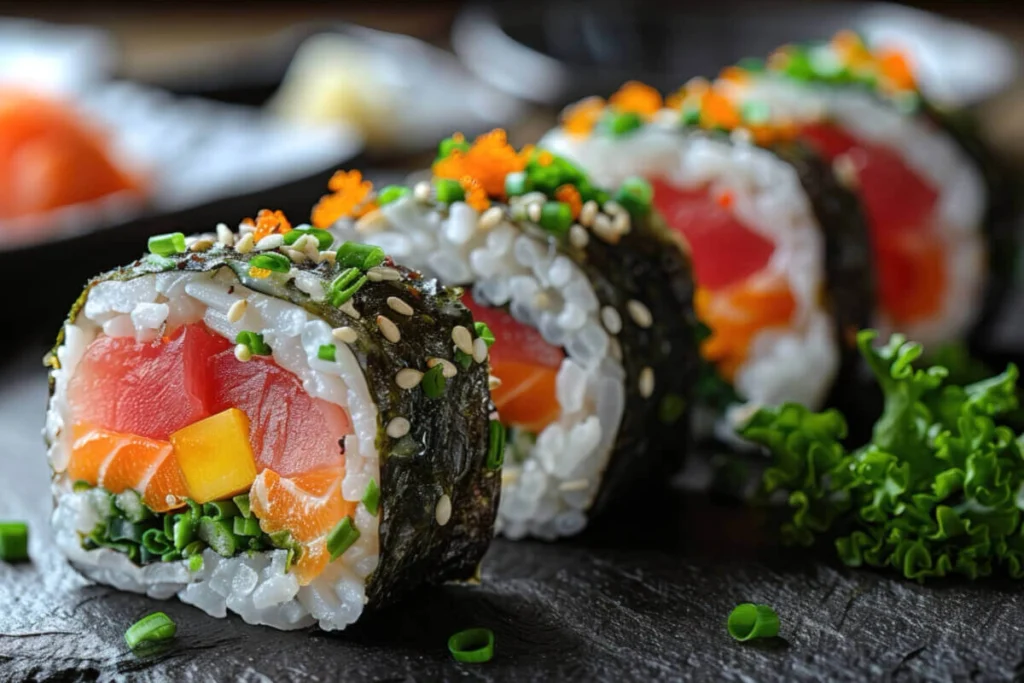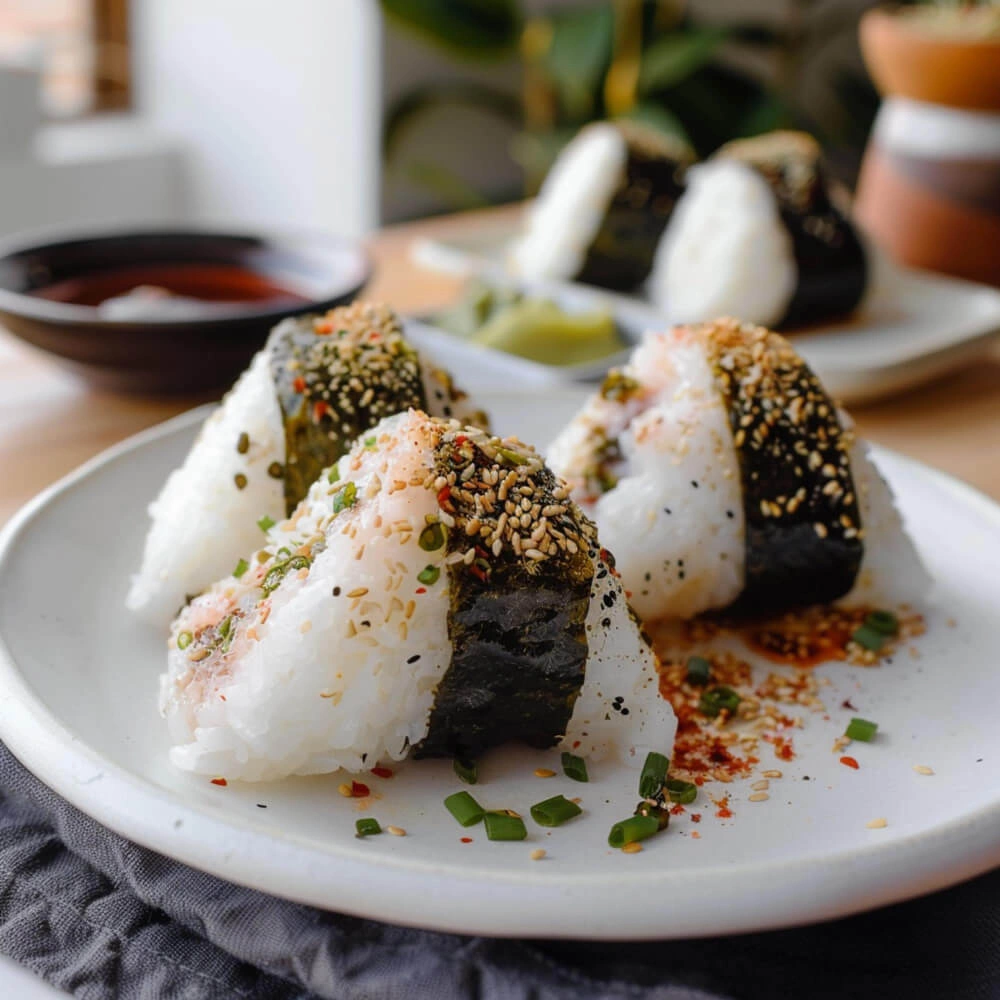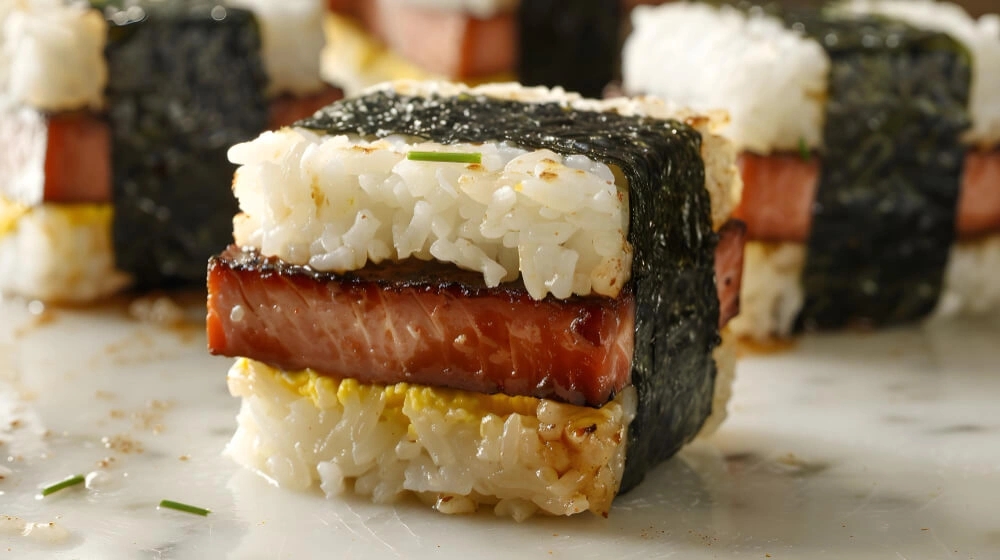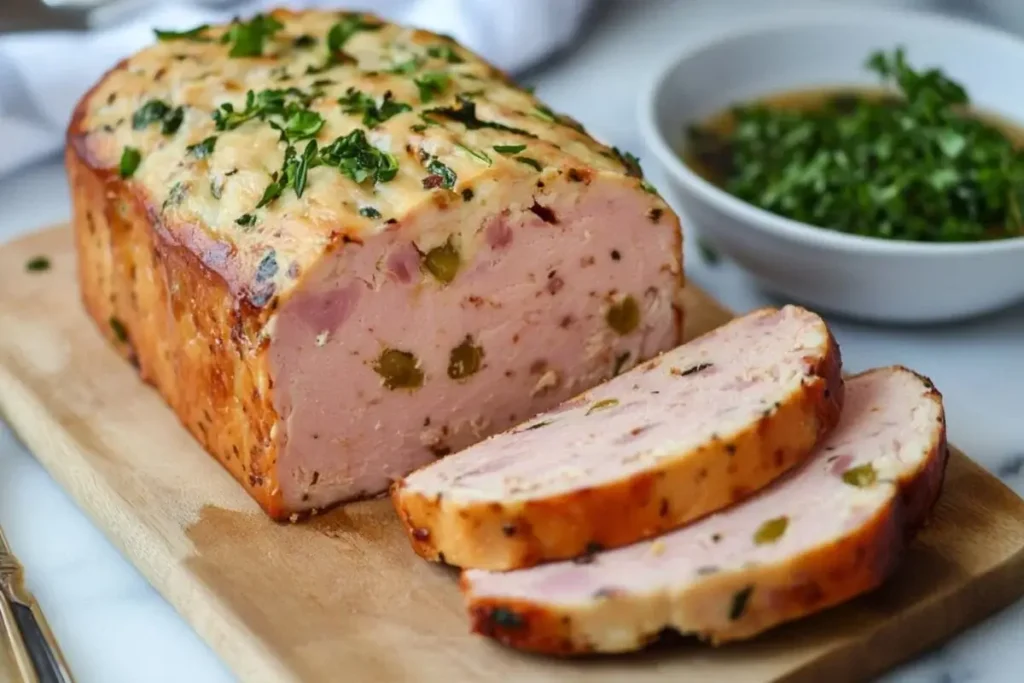
Introduction
Sushi is more than just fresh fish—it’s the rice that defines its flavor, texture, and authenticity. Sushi rice, also known as shari (しゃり) or sumeshi (酢飯) in Japanese, is what holds sushi together, complementing the toppings and enhancing the overall taste.
What makes sushi rice special?
- Perfect Stickiness – The short-grain rice is slightly sticky, allowing it to hold its shape without being mushy.
- Balanced Flavor – A delicate mix of rice vinegar, sugar, and salt gives sushi rice its signature taste.
- Essential for Texture – The right rice ensures a light, airy bite, preventing sushi from feeling too heavy.
The History of Sushi Rice
The Origins of Sushi and the Role of Rice
Sushi, as we know it today, has its roots in ancient Southeast Asia, where fish was fermented with rice to preserve it. This technique, known as narezushi (馴れ寿司), eventually made its way to Japan, where the role of rice shifted from preservation to a key part of the dish itself.
- Early Forms of Sushi (Narezushi, 8th Century) – Rice was used to ferment fish, but it was discarded before eating.
- The Transition to Edible Rice (Oshizushi, 15th Century) – In Osaka, pressed sushi (oshizushi) was created, where vinegared rice was eaten with fish.
- Edo-Style Sushi (Nigiri, 19th Century) – In Tokyo (formerly Edo), sushi evolved into hand-pressed nigiri, where fresh fish was served over seasoned rice—laying the foundation for modern sushi.
How Traditional Sushi Rice Evolved Over Time
As sushi grew in popularity, the method of preparing sushi rice became more refined, focusing on:
The Perfect Rice Grain – Short-grain Japanese rice (like Koshihikari) became the preferred choice due to its ideal stickiness and texture.
Seasoning with Vinegar – To replicate the tangy taste of fermented rice, a mix of rice vinegar, sugar, and salt was introduced.
The Role of Freshness – Unlike early fermented sushi, modern sushi rice is served fresh, slightly warm, and delicately flavored.
Essential Ingredients for Authentic Sushi Rice
Perfect sushi rice is all about texture, balance, and subtle umami flavors. While it may seem simple, choosing the right ingredients and using proper techniques is essential to achieving that light, slightly sticky, and flavorful sushi rice found in the best sushi restaurants.
Choosing the Right Type of Rice: Short-Grain vs. Medium-Grain
The foundation of sushi rice starts with choosing the right variety of rice, as not all rice types work for sushi.
Short-Grain Japanese Rice (Best Choice)
- Varieties like Koshihikari and Sasanishiki have the ideal stickiness and moisture content.
- This rice holds together well for sushi without becoming mushy.
- Available in most Asian grocery stores and labeled as “sushi rice”.
Medium-Grain Rice (Alternative Choice)
- Varieties like Calrose rice (commonly grown in the U.S.) can be used but tend to be less sticky than traditional short-grain rice.
- While not ideal for nigiri, it can work for sushi bowls or rolls in a pinch.
Avoid Long-Grain Rice (Basmati, Jasmine)
- These varieties lack the starch content needed for proper sushi rice texture and won’t hold together when making sushi.
Rice Vinegar, Sugar, and Salt: Achieving the Perfect Balance
Once the rice is cooked, it must be seasoned with a delicate balance of vinegar, sugar, and salt to achieve the signature sushi rice flavor.
Rice Vinegar:
- Provides a mild tanginess that balances the richness of sushi toppings.
- Use unseasoned rice vinegar to control the flavor.
Sugar:
- Enhances the natural sweetness of the rice and softens the acidity of the vinegar.
Salt:
- Brings out the umami and enhances overall flavor balance.
Classic Sushi Rice Seasoning Ratio
(Makes enough for 2 cups of uncooked rice)
- ¼ cup (60ml) rice vinegar
- 1 tablespoon sugar
- ½ teaspoon salt
The Role of Kombu (Seaweed) for Extra Umami
What is Kombu?
- A type of dried seaweed (kelp) that adds natural umami to sushi rice.
- Used in many Japanese dishes, kombu enhances the depth of flavor without overpowering the rice.
How to Use Kombu in Sushi Rice:
- Add a small piece (about 2 inches) to the water before cooking the rice.
- Remove after cooking to infuse a subtle umami essence.

Step-by-Step Guide to Making Perfect Sushi Rice
Achieving the perfect sushi rice texture requires proper preparation, cooking, and seasoning techniques. Follow these steps for light, sticky, and well-balanced rice every time.
Rinsing and Soaking: Why It’s Crucial for Texture
Why Rinse the Rice?
- Removes excess starch, preventing the rice from becoming gummy or overly sticky.
- Helps achieve separate, glossy grains while maintaining enough stickiness for sushi.
How to Rinse Sushi Rice:
- Place the rice in a bowl and fill with cold water.
- Swirl the rice with your hands until the water turns cloudy.
- Drain and repeat 3-4 times until the water runs clear.
- Let the rice drain in a sieve for 5-10 minutes before cooking.
Why Soak the Rice?
- Soaking for 20-30 minutes allows the grains to absorb water evenly, leading to a softer, fluffier texture.
Cooking the Rice: Stovetop, Rice Cooker, or Instant Pot?
Rice Cooker (Best & Easiest Method)
- Water Ratio: 1:1 with sushi rice (adjust slightly depending on your rice cooker).
- Set to the regular white rice setting and let it steam for 10 minutes after cooking.
Stovetop Method
- Use 1¼ cups water per 1 cup of sushi rice.
- Bring to a boil, then cover and reduce heat to low.
- Simmer for 15 minutes, then remove from heat and let steam for 10 minutes before fluffing.
Instant Pot Method
- Use a 1:1 rice-to-water ratio.
- Cook on high pressure for 5 minutes, then natural release for 10 minutes.
Seasoning the Rice: Mixing Without Crushing the Grains
Once the rice is cooked, it needs to be seasoned properly to achieve the perfect sushi flavor.
How to Season Sushi Rice Correctly:
- Transfer the hot rice to a wide, shallow bowl (preferably wooden).
- Drizzle the vinegar-sugar-salt mixture over the rice.
- Use a wooden spatula or rice paddle to gently fold and mix the rice in a slicing motion (avoid mashing the grains).
- Fan the rice while mixing to help it cool faster and absorb the seasoning evenly.
Tips for the Best Sushi Rice:
- Do not stir too aggressively—this can make the rice mushy.
- Let the rice cool to room temperature before using in sushi.
- Cover with a damp towel if not using immediately to prevent drying out.
Expert Tips for Achieving the Best Sushi Rice
Sushi rice is the heart of great sushi, and getting the texture right is crucial. If the rice is too mushy, too dry, or not sticky enough, it can ruin the overall sushi experience. Here’s how to ensure perfect sushi rice every time.
How to Prevent Sushi Rice from Becoming Too Mushy or Dry
If the Rice is Too Mushy:
- Cause: Too much water or overcooking.
- Fix: Next time, reduce the water slightly (try a 1:1 rice-to-water ratio in a rice cooker). Avoid stirring the rice while cooking, which can break the grains.
If the Rice is Too Dry or Hard:
- Cause: Not enough water or undercooking.
- Fix: After cooking, add a small splash of warm water, cover, and let it steam for 10 more minutes before fluffing.
General Tip:
- Always rinse the rice properly to remove excess starch (which can make it too sticky or gummy).
- Let the rice rest for 10 minutes after cooking so it absorbs any remaining moisture evenly.
Cooling Techniques for the Ideal Stickiness
Sushi rice needs to be lightly sticky but not clumped together. The cooling process plays a big role in achieving the right texture.
Best Cooling Method:
- Transfer the hot rice to a wide, shallow bowl (a wooden bowl works best).
- Gently fold in the sushi vinegar using a cutting motion with a rice paddle—do not mash or stir aggressively.
- Use a fan or hand-fan while mixing to cool the rice quickly and give it a glossy texture.
Tips to Maintain the Right Moisture:
- If not using immediately, cover with a damp towel to keep the rice from drying out.
- Avoid refrigerating sushi rice—it hardens and loses its texture.
Common Mistakes and How to Fix Them
- Mistake: Over-mixing the Rice
- Solution: Gently fold instead of stirring to prevent crushing the grains.
- Mistake: Adding Vinegar While the Rice is Too Hot
- Solution: Let the rice cool slightly before adding the sushi vinegar mix to prevent an overpowering vinegar smell.
- Mistake: Using the Wrong Type of Rice
- Solution: Always use short-grain sushi rice (like Koshihikari) for the best stickiness and texture.
Creative Uses for Sushi Rice Beyond Sushi Rolls
Sushi rice isn’t just for vinegared rolls! Its sticky texture and lightly seasoned flavor make it versatile for a variety of dishes. Here are some fun ways to use sushi rice beyond classic vinegared rolls.
Sushi Bowls and Poke Bowls
What It Is:
- A deconstructed sushi experience served in a bowl with fresh toppings.
How to Make It:
- Start with a base of sushi rice.
- Add fresh fish (salmon, tuna), avocado, cucumbers, seaweed, edamame, and tobiko (fish roe).
- Drizzle with soy sauce, ponzu, spicy mayo, or sesame oil for flavor.
Why It Works:
- No rolling required, making it an easier way to enjoy sushi flavors at home.
Onigiri (Japanese Rice Balls) and Chirashi vinegared
Onigiri (Rice Balls):
- Sushi rice is formed into triangular or round shapes and filled with ingredients like tuna mayo, salmon, or pickled plum (umeboshi).
- Wrapped in nori (seaweed) for easy eating.
Chirashi Sushi (Scattered Sushi):
- A colorful sushi rice bowl topped with sliced sashimi, tamago (Japanese omelet), and vegetables.
- Often served at special occasions in Japan.
Why It Works:
- Onigiri is great for meal prep or lunchboxes, while chirashi sushi is a beautiful, easy way to enjoy sushi flavors without rolling.
Rice-Based Sushi Bake and Other Fusion Dishes
Sushi Bake:
- A layered casserole-style vinegared dish, where sushi rice is baked with creamy seafood toppings (like salmon, crab, and spicy mayo).
- Served warm with nori sheets for scooping.
Fusion Dishes:
- Sushi burritos – Large sushi rolls wrapped in seaweed like a burrito.
- vinegared sandwiches (Onigirazu) – A rice and filling sandwich wrapped in nori.
- Crispy sushi rice bites – Sushi rice is pan-fried into crispy squares and topped with spicy tuna or salmon.
Why It Works:
- These dishes take sushi rice flavors in fun, innovative directions while keeping it easy to prepare.

How to Store and Keep Sushi Rice Fresh
Sushi rice is best enjoyed fresh, but if you have leftovers, proper storage and reheating techniques can help preserve its texture and flavor. Unlike plain rice, vinegared rice contains vinegar seasoning, which requires extra care when storing to prevent it from becoming dry, hard, or overly sticky.
The Best Way to Store Leftover Sushi Rice
Room Temperature (Short-Term Storage – Best for Same-Day Use)
- If you plan to use sushi rice within a few hours, keep it at room temperature.
- Cover with a damp towel or plastic wrap to prevent drying out.
- Store in a shallow bowl instead of a deep container to maintain an even texture.
Refrigeration (For Next-Day Use – Not Ideal but Possible)
- Place the rice in an airtight container or wrap it tightly with plastic wrap to minimize moisture loss.
- Keep it in the refrigerator for no more than 24 hours, as refrigeration makes rice hard and dry.
- Tip: Before sealing the container, cover the rice with a damp paper towel to help retain some moisture.
Freezing (Not Recommended for Sushi)
- Freezing sushi rice alters its texture, making it too dry and crumbly when thawed.
- If necessary, freeze sushi rice without seasoning and reheat before adding vinegar seasoning.
How to Reheat Without Losing Texture
Sushi rice should be soft, slightly sticky, and at room temperature when used for vinegared. Refrigerated rice becomes hard, so reheating must be done gently to restore moisture.
Microwave Method (Quick & Effective)
- Place sushi rice in a microwave-safe bowl.
- Cover with a damp paper towel or sprinkle with a few drops of water.
- Microwave in 10-15 second intervals, fluffing the rice in between until it reaches room temperature.
Steaming Method (Best for Even Reheating)
- Place the rice in a heatproof bowl.
- Set it over a pot of simmering water (double boiler method).
- Cover and steam for a few minutes until soft and warm.
Avoid Direct Stovetop Reheating
- Direct heat dries out and overcooks sushi rice, making it clumpy or hard.
Final Step: Let the Rice Cool Slightly
- After reheating, let the rice sit for a few minutes at room temperature before using it for vinegared.
- Do not use hot rice, as it can make vinegared rolls too soft or difficult to handle.
FAQs
Can I make sushi rice ahead of time?
Yes, but sushi rice is best when freshly made. If you need to prepare it in advance:
- Short-Term (Same Day): Keep the rice at room temperature in a shallow bowl, covered with a damp towel or plastic wrap to prevent drying.
- Overnight (Refrigeration): Store in an airtight container with a damp paper towel on top. Before using, gently reheat it in the microwave with a few drops of water to soften it.
What’s the best rice brand for sushi?
For authentic sushi rice, short-grain Japanese rice is the best choice. Popular brands include:
Japanese Brands (Best Choice):
- Koshihikari – Premium sushi rice, slightly sweet with the perfect stickiness.
- Sasanishiki – Lighter texture, great for sushi rolls and nigiri.
American-Grown Alternatives:
- Lundberg Organic Sushi Rice – High-quality, short-grain rice grown in the U.S.
- Nishiki or Botan Calrose Rice – Medium-grain but still works well for sushi.
How do I keep my sushi rice from getting too sticky?
Sushi rice should be lightly sticky but not clumpy. To avoid excess stickiness:
- Rinse the rice thoroughly before cooking (at least 3-4 times until the water runs clear).
- Use the correct rice-to-water ratio (typically 1:1 for rice cookers, slightly more water for stovetop).
- Gently mix the vinegar seasoning into the rice while fanning to cool it quickly—do not overmix.
Can I use brown rice instead of white sushi rice?
Yes, but it will have a different texture and taste. Brown rice is less sticky and chewier, making it harder to hold together for sushi rolls.
Tips for Using Brown Rice in Sushi:
- Cook with slightly more water to soften the grains.
- Add a bit of rice vinegar and a teaspoon of oil to mimic the texture of white sushi rice.
- Works best for sushi bowls or hand rolls rather than traditional rolls or nigiri.
How long can sushi rice sit out before using it?
Sushi rice should be used within 4 hours if left at room temperature.
For Best Freshness:
- Keep it covered with a damp towel to prevent drying.
- Store in a shallow bowl to cool evenly.
Do not leave sushi rice out overnight, as it can spoil or develop bacteria due to the moisture content.
What’s the best way to season sushi rice for different dishes?
The classic sushi rice seasoning is ¼ cup rice vinegar, 1 tablespoon sugar, and ½ teaspoon salt per 2 cups of rice. However, different dishes may require variations:
- For Sushi Rolls & Nigiri: Use the traditional sushi seasoning for balanced flavor.
- For Poke Bowls & Sushi Bowls: Add a touch of soy sauce or sesame oil for extra depth.
- For Chirashi Sushi (Scattered Sushi): Slightly reduce the sugar and add a splash of yuzu juice for a citrusy twist.
- For Fusion Dishes (Sushi Bake, Sushi Burritos): Keep seasoning light and adjust to match other bold flavors in the dish.
Conclusion
Sushi rice is the foundation of perfect vinegared, providing the ideal texture, flavor, and balance that complements fresh seafood and other toppings. Mastering sushi rice requires selecting the right short-grain variety, properly rinsing and cooking it, and seasoning it with a delicate blend of rice vinegar, sugar, and salt.
By following expert techniques for preparation, storage, and reheating, you can ensure that your seasoned rice remains lightly sticky, well-seasoned, and easy to work with—whether you’re making traditional sushi rolls, vinegared bowls, or creative fusion dishes.
Viral Tuna Salad: 5 Bold Reasons Matthew McConaughey’s Recipe Wins
Healthy Homemade Chicken Mortadella
Chicken Mortadella changed my deli game forever. I used to stare at processed meat…
The BEST Taco Pasta
When I’m short on time and need to get a satisfying dinner on…
Classic German Kartoffelpuffer Recipe (Authentic, Crispy & Easy to Make)
Easy Butter Pecan Cookies Recipe
There’s something undeniably comforting about the scent of buttery, nutty cookies wafting from…
Perfect Strawberry Cheesecake Recipe
If there’s one dessert that’s guaranteed to silence a lively room, it’s this…







2 thoughts on “Sushi Rice”